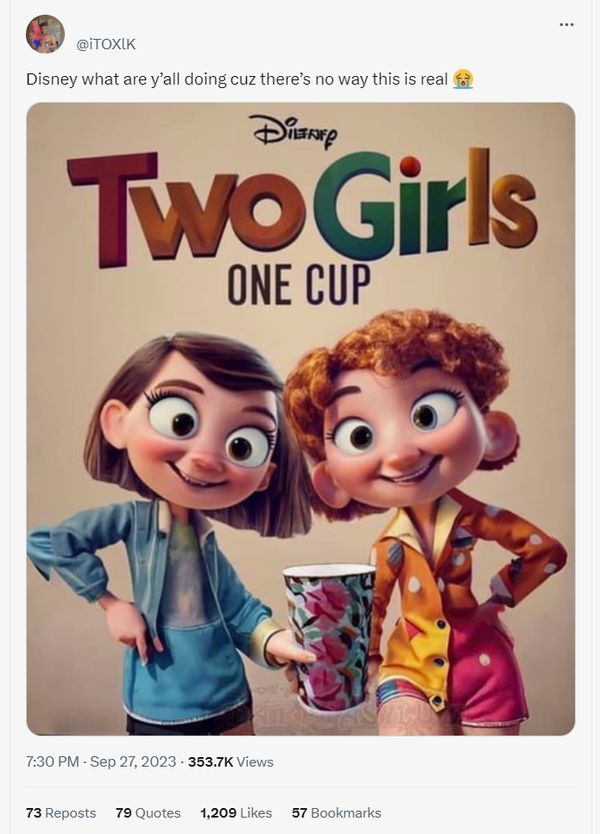What is the impact of viral internet content on society and culture? The phrase Two Girls One Cup has become a notorious example of shock site phenomena that dominated online spaces in the mid-2000s. This infamous video, originally created as a trailer for an adult film titled Hungry Bitches, quickly transcended its intended audience to become a cultural touchstone. Its rapid spread across the internet demonstrated the power of user-generated content and highlighted the complexities of censorship in digital media.
The origins of Two Girls One Cup trace back to 2007 when it first emerged on various forums and websites. Initially conceived by MFX Media as promotional material for their artistic project, the video featured extreme content involving two women engaging in acts considered taboo by mainstream standards. Despite—or perhaps because of—its controversial nature, the clip went viral almost instantly. It sparked widespread debate about freedom of expression versus ethical responsibility in content creation and dissemination. Social media platforms played a pivotal role in amplifying its reach, with users sharing links and discussing reactions openly.
| Bio Data & Personal Information | Career & Professional Information |
|---|---|
| Name: MFX Media Team | Industry: Adult Film Production |
| Founded: Early 2000s | Notable Works: Hungry Bitches, Two Girls One Cup |
| Location: Brazil | Website: IMDb Reference |
As the controversy surrounding Two Girls One Cup grew, so did public fascination with its creators. Abby Howells and Angella Dravid, the performers involved, eventually embraced their association with the video. They reunited years later for performances during the New Zealand Comedy Festival, drawing crowds eager to witness the individuals behind the infamous footage. Their show took place at The Basement Theatre from May 7th to 11th, starting at 6:30 PM each evening. Photography by Andi Crown captured moments from these events, providing fans with tangible memories of this unique reunion.
Despite its notoriety, interpretations of Two Girls One Cup vary widely among audiences. Some view it purely as a shocking spectacle designed to provoke visceral reactions, while others argue it possesses artistic merit worthy of deeper analysis. A notable tweet from user FOURndy encapsulates this duality through emojis representing discomfort (😫), gas release (💨), feces (💩), coffee (☕), and tongue (👅). Such creative expressions reflect how people process and communicate complex emotions evoked by such content.
In unexpected ways, references to Two Girls One Cup have infiltrated popular culture beyond its original context. For instance, comedian Josue Pagan humorously described it as a wonderful Christmas special featuring the greatest attribute of Christmas—sharing and caring. Similarly, prohibition_comedy used the topic as part of their comedic repertoire, teaching younger audiences about internet history while promoting upcoming shows. These instances demonstrate how even highly controversial material can find new life within different frameworks, often stripped of its initial shock value.
Moreover, discussions around Two Girls One Cup frequently intersect with broader conversations about internet governance and moral boundaries. Critics question whether unrestricted access to extreme content benefits or harms society, particularly concerning vulnerable populations like children who may encounter such videos accidentally. Proponents counter that banning specific types of content risks setting dangerous precedents regarding free speech rights. Balancing these competing interests remains one of the most challenging aspects of managing today's interconnected world.
Technological advancements since 2007 have only intensified debates over similar issues. Streaming services now offer curated content libraries where explicit materials are more easily accessible than ever before. Meanwhile, algorithms employed by social networks often prioritize sensational headlines and eye-catching visuals, potentially exacerbating trends toward increasingly graphic content consumption patterns. Understanding these dynamics requires examining both technological innovations themselves and societal attitudes shaping their implementation.
Ultimately, the legacy of Two Girls One Cup serves as a cautionary tale about unintended consequences arising from digital innovation. While few would dispute its status as one of the internet's defining moments, opinions differ sharply regarding what lessons should be learned moving forward. As technology continues evolving rapidly, ensuring responsible usage practices becomes ever more critical—not just for preserving individual dignity but also for safeguarding collective well-being across global communities interconnected via cyberspace.




